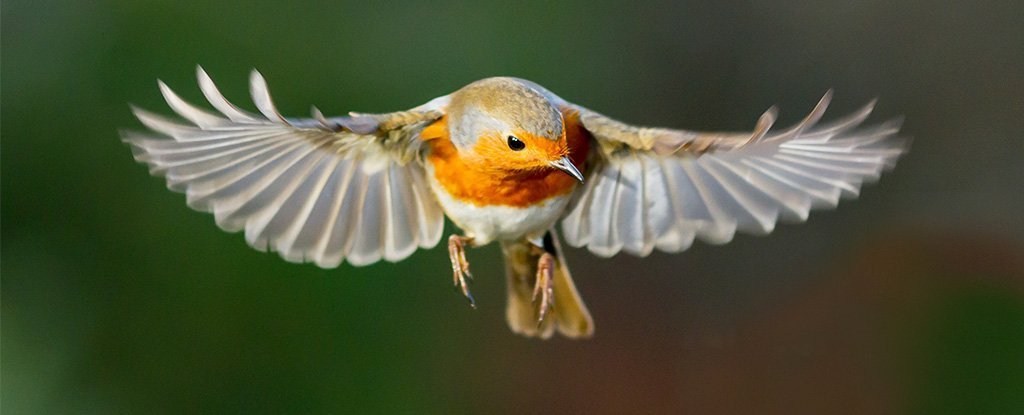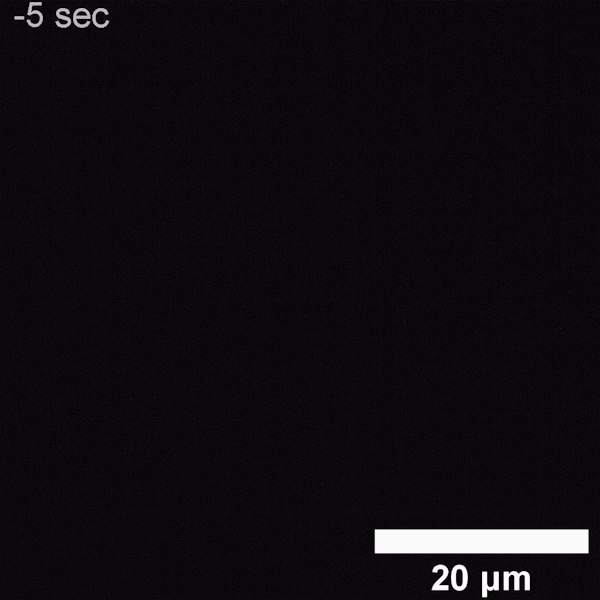
Posted on 01/11/2021 11:56:04 AM PST by Red Badger

Seeing our world through the eyes of a migratory bird would be a rather spooky experience. Something about their visual system allows them to 'see' our planet's magnetic field, a clever trick of quantum physics, and biochemistry that helps them navigate vast distances.
Now, for the first time ever, scientists from the University of Tokyo have directly observed a key reaction hypothesised to be behind birds', and many other creatures', talents for sensing the direction of the planet's poles.
Importantly, this is evidence of quantum physics directly affecting a biochemical reaction in a cell – something we've long hypothesised but haven't seen in action before.
Using a tailor-made microscope sensitive to faint flashes of light, the team watched a culture of human cells containing a special light-sensitive material respond dynamically to changes in a magnetic field.

400152132 A cell's fluorescence dimming as a magnetic field passes over it. (Ikeya and Woodward, CC BY 4.0)
The change the researchers observed in the lab match just what would be expected if a quirky quantum effect was responsible for the illuminating reaction.
"We've not modified or added anything to these cells," says biophysicist Jonathan Woodward.
"We think we have extremely strong evidence that we've observed a purely quantum mechanical process affecting chemical activity at the cellular level."
So how are cells, particularly human cells, capable of responding to magnetic fields?
While there are several hypotheses out there, many researchers think the ability is due to a unique quantum reaction involving photoreceptors called cryptochromes.
Cyrptochromes are found in the cells of many species and are involved in regulating circadian rhythms. In species of migratory birds, dogs, and other species, they're linked to the mysterious ability to sense magnetic fields.
In fact, while most of us can't see magnetic fields, our own cells definitely contain cryptochromes. And there's evidence that even though it's not conscious, humans are actually still capable of detecting Earth's magnetism.
To see the reaction within cyrptochromes in action, the researchers bathed a culture of human cells containing cryptochromes in blue light caused them to fluoresce weakly. As they glowed, the team swept magnetic fields of various frequencies repeatedly over the cells.
They found that each time the magnetic field passed over the cells, their fluorescence dipped around 3.5 percent – enough to show a direct reaction.
So how can a magnetic field affect a photoreceptor?
It all comes down to something called spin – an innate property of electrons.
We already know that spin is significantly affected by magnetic fields. Arrange electrons in the right way around an atom, and collect enough of them together in one place, and the resulting mass of material can be made to move using nothing more than a weak magnetic field like the one that surrounds our planet.
This is all well and good if you want to make a needle for a navigational compass. But with no obvious signs of magnetically-sensitive chunks of material inside pigeon skulls, physicists have had to think smaller.
In 1975, a Max Planck Institute researcher named Klaus Schulten developed a theory on how magnetic fields could influence chemical reactions.
It involved something called a radical pair.
A garden-variety radical is an electron in the outer shell of an atom that isn't partnered with a second electron.
Sometimes these bachelor electrons can adopt a wingman in another atom to form a radical pair. The two stay unpaired but thanks to a shared history are considered entangled, which in quantum terms means their spins will eerily correspond no matter how far apart they are.
Since this correlation can't be explained by ongoing physical connections, it's purely a quantum activity, something even Albert Einstein considered 'spooky'.
In the hustle-bustle of a living cell, their entanglement will be fleeting. But even these briefly correlating spins should last just long enough to make a subtle difference in the way their respective parent atoms behave.
In this experiment, as the magnetic field passed over the cells, the corresponding dip in fluorescence suggests that the generation of radical pairs had been affected.
An interesting consequence of the research could be in how even weak magnetic fields could indirectly affect other biological processes. While evidence of magnetism affecting human health is weak, similar experiments as this could prove to be another avenue for investigation.
"The joyous thing about this research is to see that the relationship between the spins of two individual electrons can have a major effect on biology," says Woodward.
Of course, birds aren't the only animal to rely on our magnetosphere for direction. Species of fish, worms, insects, and even some mammals have a knack for it. We humans might even be cognitively affected by Earth's faint magnetic field.
Evolution of this ability could have delivered a number of vastly different actions based on different physics.
Having evidence that at least one of them connects the weirdness of the quantum world with the behaviour of a living thing is enough to force us to wonder what other bits of biology arise from the spooky depths of fundamental physics.
This research was published in PNAS.
[[I’ve had several MRI’s with no side effects.................
I’ve had several MRI’s with no side effects.................
I’ve had several MRI’s with no side effects.................
I’ve had several MRI’s with no side effects.................
I’ve had several MRI’s with no side effects..................................]]
You too? So have I, and so have I
Maybe your dog studied the Copenhagen interpretation of quantum physics. He doesn't know which direction he'll poop until he actually poops.
He’s a Heisenberg student.
He poops but he doesn’t know where......................
He poops but he doesn’t know where.....
He can Know where and how much but not both.
And yet birds cannot conceive of “glass” so they constantly fly into my picture window.
People do that to patio doors and screens, too...............................
I know, roses are red, violets are blue, I have multiple personalities, and so do I

Monarch Butterflies - they have tiny bit of iron (or magnetite) inside. Like a GPS!
This helps them to get back and forth to/from Mexico and southern climes every year.
btt
...guys talk, ya hear things...
I know you guys are only kidding but let me tell you a story something that “cant happen” that happened to me. Its not I think either of you would really care but I thought Id write this down just in case a physician ever stumbles across this post and has a patient with a similar complaint.
Im in the donut (<=6 total, 2(?) contrast) and staring into the darkness behind my closed eyelids. A swirling glowing deep purple w/ silver metallic flake cloud appeared and filled my vision. 2 or 3 seconds later the tech says, “We’ve started the contrast.” It swirled through the procedure. Afterwards it was still there when I would close my eyes but the metallic flakes were gone.
I went and ate a giant pile of fries and a double cheeseburger from the greasiest place I knew. I figured it would just go away.
A couple of days later it did go away...and was replaced by a cloud of powdered sulfer that hangs in any dark environment, eyes open or not.
Its been 11, closer to 12 years now and its still there. Couldnt get help because Im “making it up.”
Im pretty sure its not actually in my eyes but in the retina or brain end. There are swirls and denser clumps much like a thick but uneven fog and when I look around the swirls and clumps dont follow in my vision. Ive stopped complaining, it doesnt effect much. The night sky sure looks different though.
Sounds weird for sure, but sounds like it triggered something.
Here’s a site talking about ‘cloudy vision’ after contrast- but they seemed to clear up after-
https://healthunlocked.com/nras/posts/130916324/has-anyone-ever-had-blurry-vision-after-mri


Disclaimer: Opinions posted on Free Republic are those of the individual posters and do not necessarily represent the opinion of Free Republic or its management. All materials posted herein are protected by copyright law and the exemption for fair use of copyrighted works.